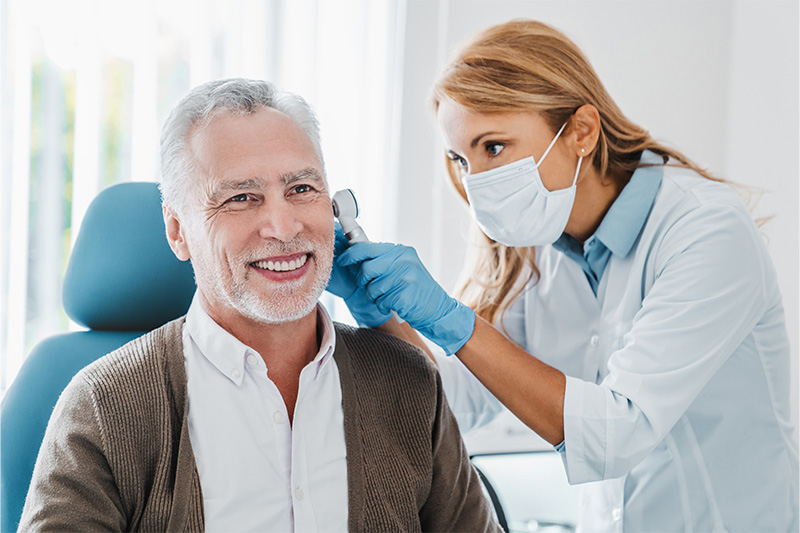
The outer ear is the funnel-like part of the ear you can see on the side of the head, plus the ear canal (the hole which leads down to the eardrum).
The ear canal is shaped somewhat like an hourglass-narrowing part way down. The skin of the outer part of the canal has special glands that produce earwax. This wax is supposed to trap dust and dirt particles to keep them from reaching the eardrum. Usually the wax accumulates a bit, dries out and then comes tumbling out of the ear, carrying dirt and dust with it. Or it may slowly migrate to the outside where it can be wiped off. The ear canal may be blocked by wax when attempts to clean the ear push wax deeper into the ear canal and cause a blockage. Wax blockage is one of the most common causes of hearing loss.
Wax is not formed in the deep part of the ear canal near the eardrum, but only in the outer part of the canal. So when a patient has wax blocked up against the eardrum, it is often because he has been probing his ear with such things as cotton-tipped applicators, bobby pins, or twisted napkin corners. These objects only push the wax in deeper. Also, the skin of the ear canal and the eardrum is very thin and fragile and is easily injured.
Earwax is healthy in normal amounts and serves to coat the skin of the ear canal where it acts as a temporary water repellent. The absence of earwax may result in dry, itchy ears.
Most of the time the ear canals are self-cleaning; that is, there is a slow and orderly migration of ear canal skin from the eardrum to the ear opening. Old earwax is constantly being transported from the ear canal to the ear opening where it usually dries, flakes, and falls out.
Under ideal circumstances, you should never have to clean your ear canals. However, we all know that this isn't always so. If you want to clean your ears, you can wash the external ear with a cloth over a finger, but do not insert anything into the ear canal.
Most cases of earwax blockage respond to home treatments used to soften wax if there is no hole in the eardrum. Patients can try placing a few drops of mineral oil, baby oil, glycerin, or commercial ear wax removal drops, such as Debrox®, Mack's® Wax AwayTM, Murine®, or Physicians' ChoiceTM in the ear. These remedies are not as strong as the prescription wax softeners but are effective for many patients. Rarely, people have allergic reactions to commercial preparations. Detergent drops such as hydrogen peroxide or carbamide peroxide may also aid in the removal of wax. Patients should know that rinsing the ear canal with hydrogen peroxide (H2O2) results in oxygen bubbling off and water being left behind-wet, warm ear canals make good incubators for growth of bacteria. Flushing the ear canal with rubbing alcohol displaces the water and dries the canal skin. If alcohol causes severe pain, it suggests the presence of an eardrum perforation.
If you are uncertain whether you have a hole (perforation or puncture) in your eardrum, consult your physician prior to trying any over-the-counter remedies. Putting ear drops or other products in your ear in the presence of an eardrum perforation may cause an infection. Certainly, washing water through such a hole could start an infection. In the event that the home treatments discussed in this leaflet are not satisfactory, or if wax has accumulated so much that it blocks the ear canal (and hearing), your physician may prescribe ear drops designed to soften wax, or he may wash or vacuum it out. Occasionally, an otolaryngologist (ENT specialist) may need to remove the wax using microscopic visualization.
